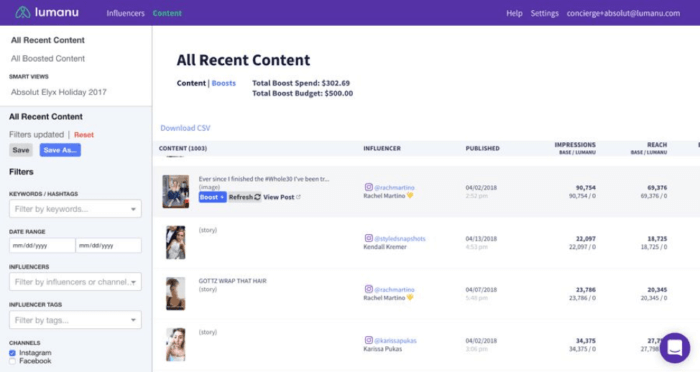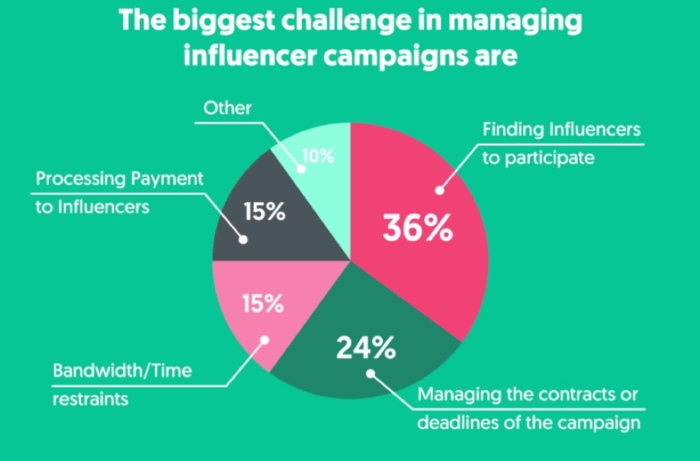Want to run successful influencer marketing campaigns? This post will show you how micro-influencers can help you meet your business goals.
Let’s talk about the infamous Fyre Festival.
It has been two years since Fyre Media Inc. launched this music festival to promote its app for booking music talent. It collaborated with influencers like Bella Hadid and Emily Ratajkowski to advertise it as a glamorous party on a deserted island.
When the festival turned out to be the biggest event failure of the century, many blamed the influencers associated with it. The New York Times even chronicled it in its article that spoke about the possible fall of influencers.
This influencer marketing campaign succeeded to get worldwide attention, but the festival was still a disaster. Influencers failed to maintain transparency and showcase a more realistic picture of the festival, which resulted in them losing a lot of their followers. On top of this, the company suffered huge losses.
This is the worst-case scenario and it conveys why influencer marketing is a tool that shouldn’t be played around with.
When it comes to influencer marketing, marketers have a lot of fears, possibly because of the unfamiliarity of the medium. In spite of this, nearly 66% of marketers plan to increase their budgets for influencer marketing. An Adweek prediction stated that it will become a $10 billion market by 2020.
The higher the budgets rise, the higher the financial stakes for brands and marketing agencies. So, as a marketing professional, how can you reach your target audience and effectively market your brand, especially if your budget is small?
Working with micro-influencers can help you do so.
There are different types of influencers to choose from, but micro-influencers are the ones who stand out as a low-cost and high-ROI marketing solution. Collaborating with them has its own set of pros and cons, but the benefits often outweigh the potential challenges.
Once you have decided to work with micro-influencers for your campaign, you need to build a strategy that can help you meet your marketing goals.
5-step plan to launch a successful micro-influencer campaign
Let’s take a look at the step-by-step process to plan, execute, and manage a successful micro-influencer campaign.
First step: Set clear goals
As with any marketing strategy, yours should begin by determining what you want to achieve and how you will measure success. You need to set goals and key performance indicators (KPIs) for your campaign.
Some common influencer marketing goals include:
- Increase brand awareness
- Build an audience
- Improve engagement
- Drive sales
- Generate leads
- Build links
- Build trust and customer loyalty
Some important influencer marketing KPIs include:
- Impressions
- Engagement rate
- Reach
- Number of followers
- Click-through rate
- Views
- Number of sales
You should start with setting specific, actionable goals and associating them with relevant KPIs. These KPIs will enable you to measure the performance of your campaign while it is still ongoing. You can keep tweaking the campaign to optimize it for better performance.
StarNgage uses the four Rs of micro-influencers to determine the kind of influence they have. The 4 Rs are:
- Reach
- Resonance
- Relevance
- ROI
Leveraging this four-fold power, marketers can reach the goals they have set at the beginning of their campaigns.
Second step: Determine your budget
97% of micro-influencers don’t charge more than $500 per sponsored post, according to a survey conducted by Bloglovin’. However, a variety of factors can cause this cost to vary. For example, if you ask influencers to create and post a video, it can double this cost.
The same survey also stated that if you have a budget of $5,000, you can expect to generate up to 100 micro-influencer posts and reach approximately 200K people.
Along with cash, you can also offer other incentives to micro-influencers, such as:
- Exclusive event passes
- Recognition on your social media profiles and website
- Early access to new products
- Free trials
- Discounts
- Gift cards
- Limited product samples
Third step: Find the right influencers
Some 36% of marketers cited finding influencers as one of the biggest challenges of managing an influencer campaign.
When selecting micro-influencers for your campaign, you should look for three things: relevance, engagement rate, and authenticity.
Relevance
One of the most vital factors to consider during the influencer selection process is their relevance to your niche and brand. It is important to analyze whether their followers include your target audience. You also need to choose influencers who can create content that aligns with your brand’s values and aesthetics.
Prioritizing relevance over a large following is always an effective strategy. Micro-influencers usually have loyal followers who trust their opinions and recommendations. So, even choosing an influencer with a small but more relevant fan base can help you drive good results.
Engagement rate
A good way to gauge the kind of influence a micro-influencer has is to check the average number of interactions that occur on their posts. This can also help you analyze who engages with their posts and if the influencer has an engaged community.
If you want to find influencers with real engagement, you can look for them on communities such as Influence.co. It allows you to search for influencers by their niches and the number of followers they have. You can also look at their engagement rates, the types of content they create, and their past collaborations.
A micro-influencer who has a highly-engaged audience is someone you may want to collaborate with for your marketing campaign.
Authenticity
Influencers with a larger number of followers can demand higher payments to promote a brand. Unfortunately, this idea has led to a lot of influencers to resort to dishonest methods to boost their follower counts.
Mediakix highlighted this industry-wide problem in a post that talked about how influencers with inflated followings were scamming their way into free hotel stays. The story went viral and over 100 press outlets worldwide reported it.
This is why it’s very important that you evaluate the authenticity of the micro-influencers you choose to partner with. One way to detect fake followers is to look at their engagement rate. More than that, you need to check the authenticity of their profiles and engagement by reviewing their social profiles.
Fourth step: Create engaging content
You have set your goals and KPIs and finalized your influencers. Now it is time to plan the kind of content you want the influencers to post on social media.
You can either create content in-house and ask influencers to publish it, or you can let the influencers do the work based on your campaign brief.
Brand-generated content
In this case, you can select influencers and ask them to publish content that you create in-house.
Leveraging brand-generated content comes with the least risk of something going wrong. That’s because the influencer does not add any personalization to the content. You can cautiously create content that conveys your brand’s message to your target audience.
But, on the contrary, brand-generated content is less impactful as it has the least amount of personalization. Influencers are great content creators and they understand which types of content their audiences will like. So, letting them create content can help you engage more people.
Influencer-created content
Influencers get maximum creative freedom when you allow them to handle content creation. You just provide them with your brand’s guidelines and some general direction about the kind of content you expect from them.
Influencer-created content is more likely to be engaging and impactful. However, it comes with some risks too.
That’s why you need to establish a review process when negotiating content usage rights with your influencer partnerships to ensure that the content they create doesn’t exploit your brand’s values. You can review, analyze, request changes, and approve content before the influencer publishes it.
You can even create a library of your top-performing influencer content and repurpose it to gain more traction for your brand. Many marketers utilize platforms like Lumanu to manage the advertising permissions of their influencer relationships, curate the best performing creator content, and easily transform it into paid social campaigns that can deliver measurable ROI.

Fifth step: Measure results
It is difficult to measure and scale influencer marketing campaigns. However, if you initially set KPIs that matter to the success of your campaign, it becomes easier to measure results.
You just need to track your KPIs to see if your campaign is taking you in the right direction. Thankfully, you don’t have to track these parameters manually. There are a number of platforms and tools that can help you.
Based on the insights you gain, you can further optimize your influencer campaigns for better performance.
Final thoughts
Instagram, recently, has eliminated the possibility for people to view likes on posts. A few influencers and marketers were upset about this decision as these metrics helped them evaluate success.
But as we just discussed, influencer marketing campaign success is not really about the number of followers and likes, it is the engagement that matters. This change in perspective can greatly help micro-influencers who generate higher engagement when compared to macro-influencers.
According to a survey conducted by Markerly, micro-influencers offer the best combination of broader reach and relevant engagement. Though they have fewer followers, their audiences are loyal and highly engaged.
Micro-influencer marketing campaigns have great potential to promote your brand. However, you need to draft a fool-proof marketing strategy to unleash it.
Have you leveraged micro-influencers before? Please let us know about your experiences in the comments below.



